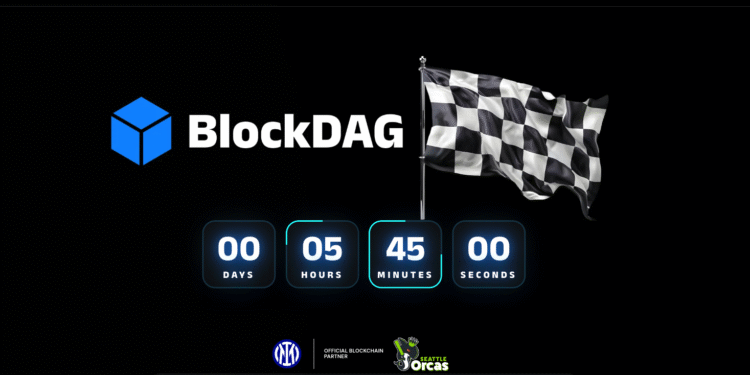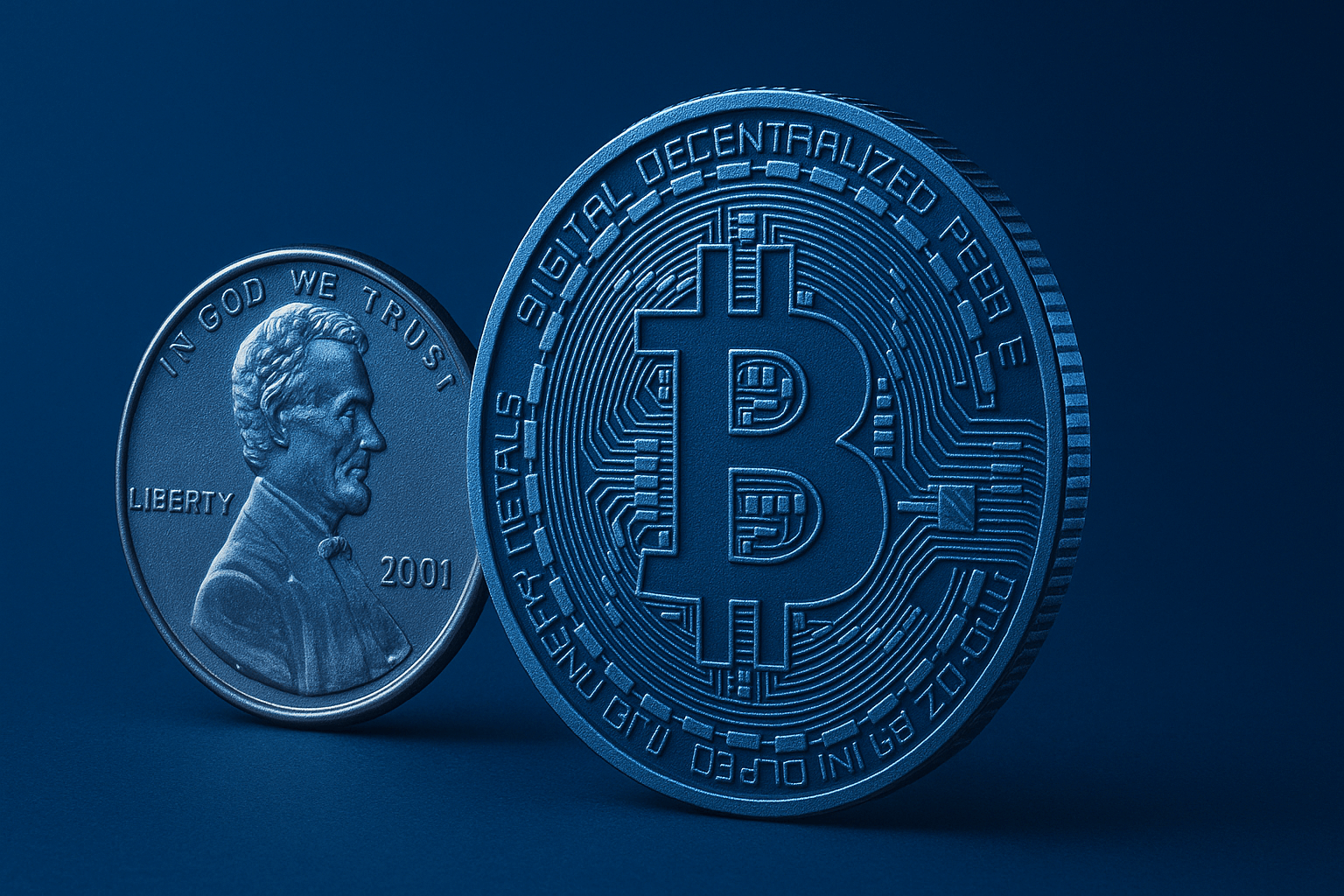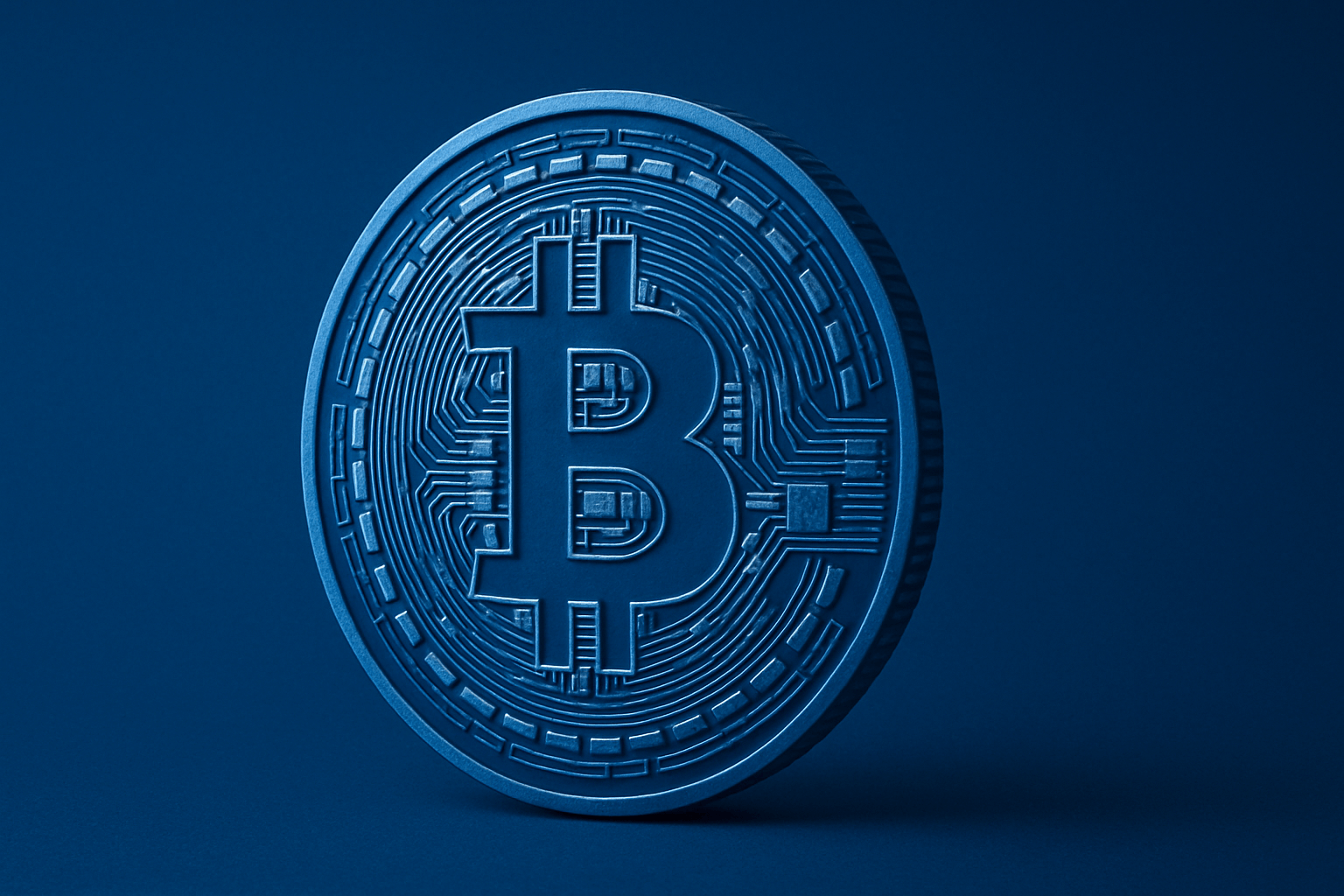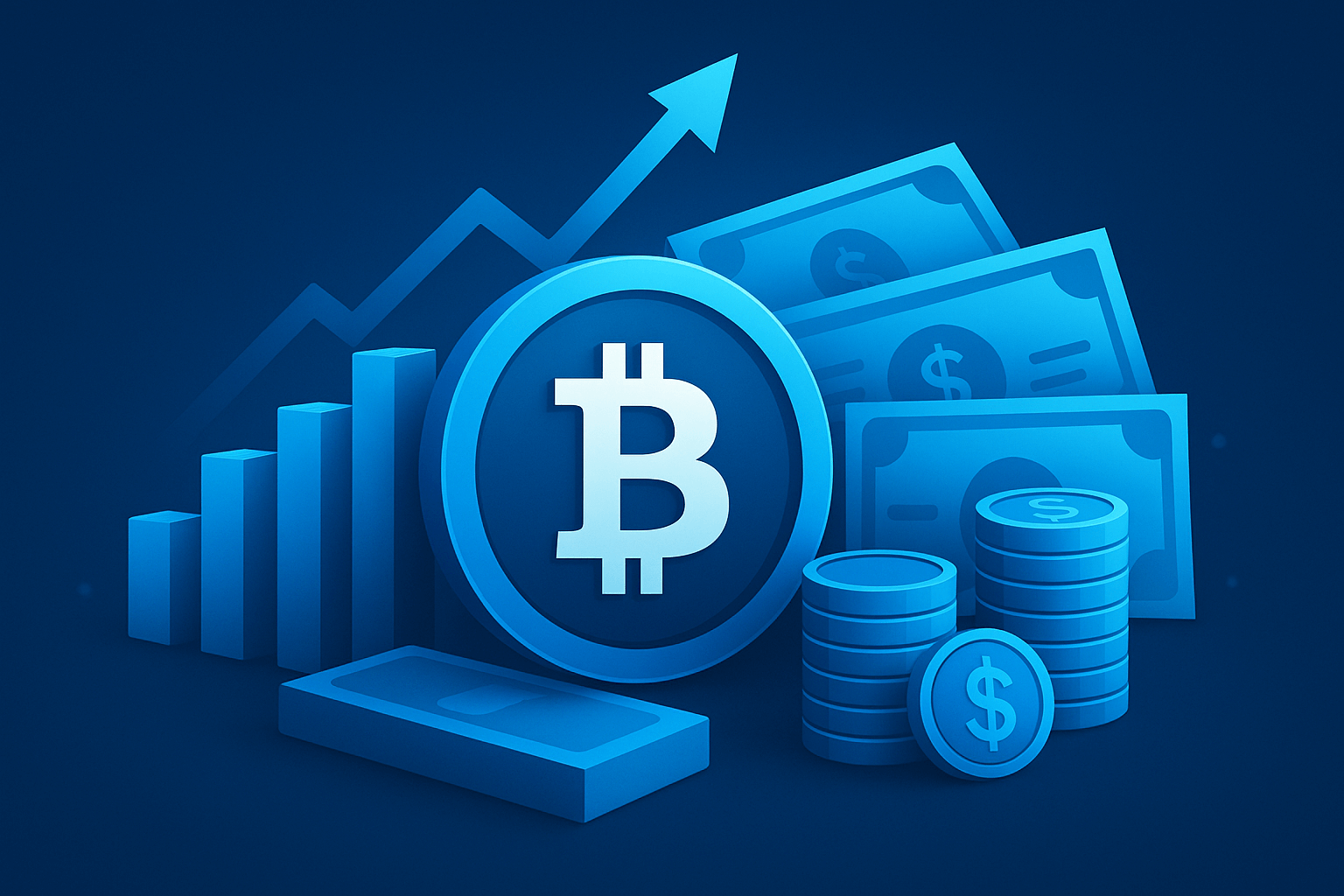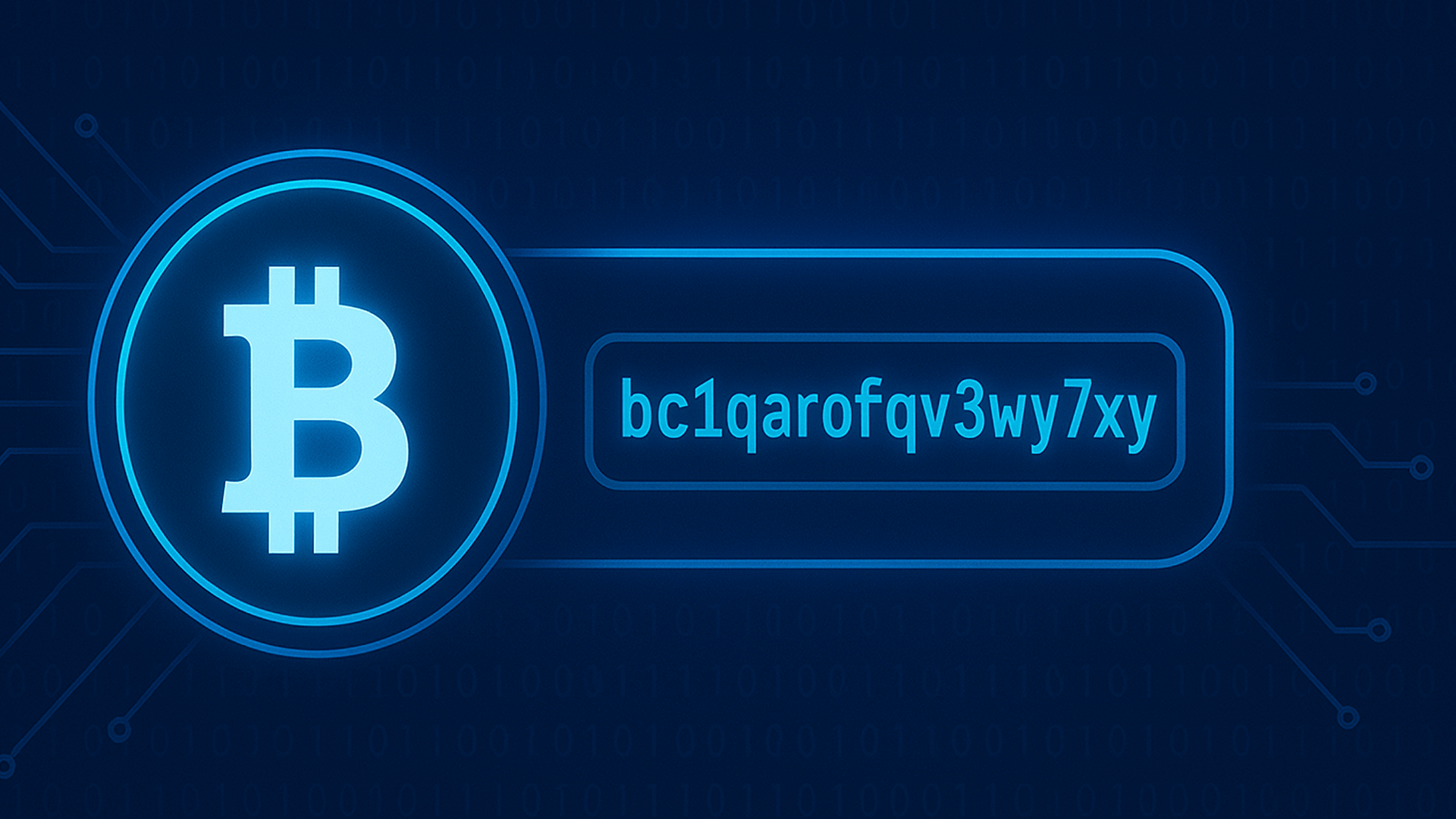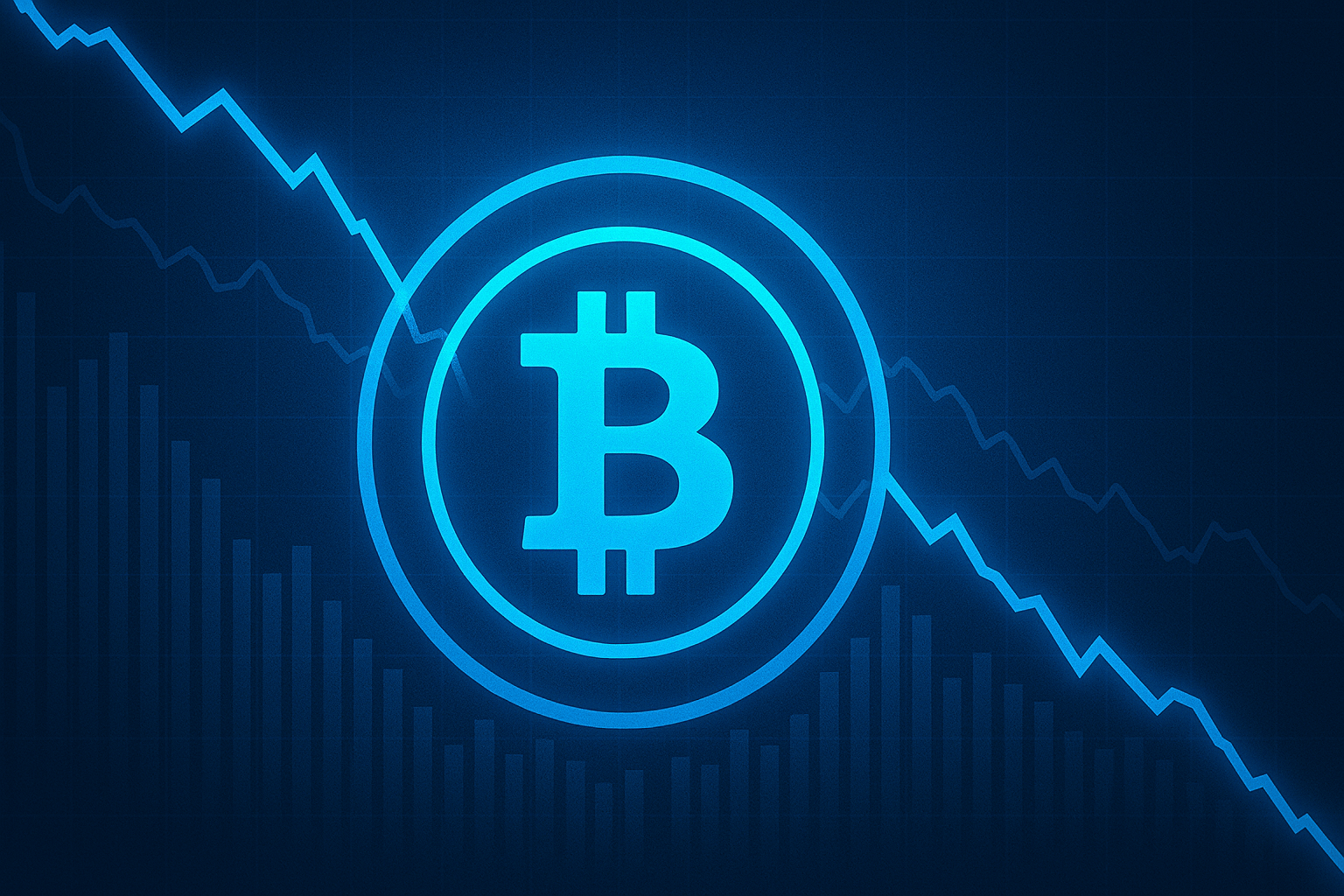As of September 9, 2025, BlockDAG (BDAG) has captured attention with an ambitious Directed Acyclic Graph (DAG) design, a large presale that reportedly surpassed $332 million, and a roadmap featuring BlockDAG Scan and the X1 Miner app—yet the postponement of its planned August 11 IEO has introduced fresh uncertainty and debate around whether fundraising momentum can carry into durable market performance.
At a glance: BDAG in 2025 (as of September 9, 2025)
Coverage from several crypto outlets paints a picture of strong early demand, technical promise, and execution challenges. The points below compile notable items reported by public sources. Numbers tied to presale proceeds, tranche prices, and late-2025 targets are an estimate by independent researchers drawn from media reports and should be verified against official announcements.
- Presale funds raised reportedly exceed $332M; tranche price advanced from $0.0001 to $0.0016 during the sale
(CryptoNews). - Architecture: Directed Acyclic Graph (DAG) for parallelized confirmations aimed at higher throughput and scalability.
- Roadmap highlights: BlockDAG Scan (explorer/analytics) and the X1 Miner application to broaden visibility and user participation
(Analytics Insight). - Listing status: Initial exchange offering (IEO) delayed from the planned August 11, 2025 date, raising transparency concerns
(CryptoNews). - Analyst range: Forecasts vary widely—from a conservative $0.0012 scenario to ambitious calls for $1 by end-2025
(CryptoTimes,
CryptoNews). - Key swing factors: IEO timing, exchange quality/liquidity, product delivery cadence, token unlock dynamics, and overall market risk appetite.
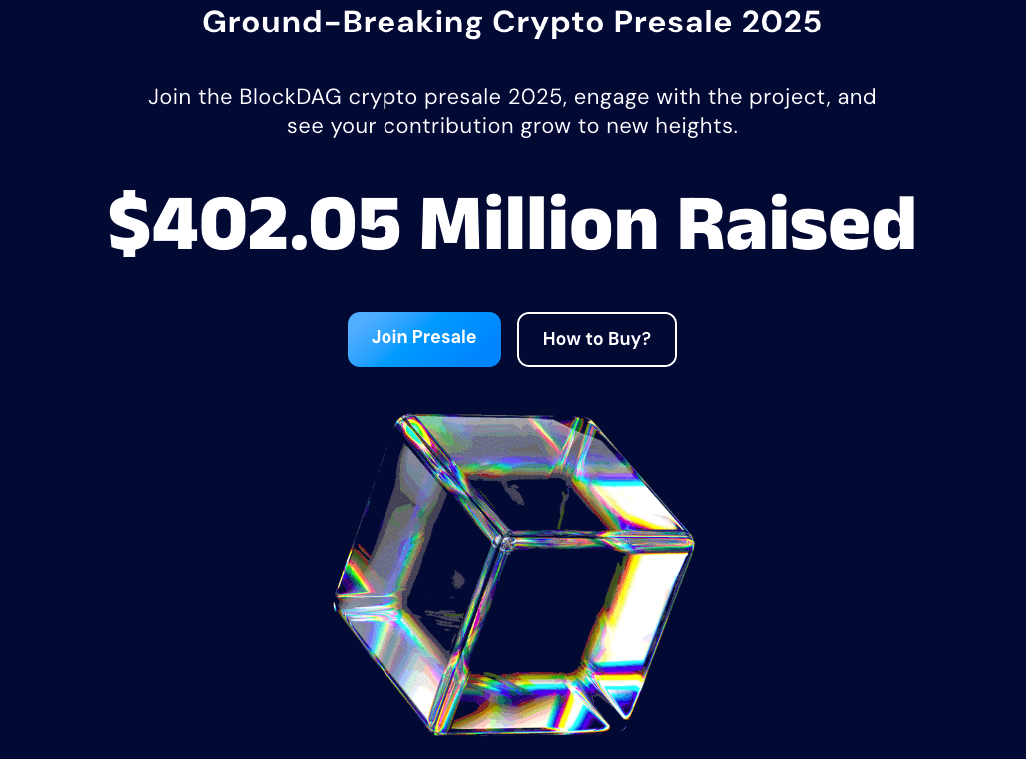
What makes BlockDAG different—and why traders care
Many crypto investors are drawn to technology that claims to break the bottlenecks of traditional blockchains. Here, BlockDAG leans on a DAG topology to allow parallel processing of activity. If this concept turns into reliable, live throughput—measured in real users, confirmed transactions, and developer-built applications—BDAG could justify attention beyond speculative narratives. The path between a whitepaper and a working economy, however, is where most projects face their hardest tests.
DAG under the hood: how parallel processing aims to beat blockchain bottlenecks
In a classic blockchain, blocks line up one after another like train cars on a single track. Only one can be added at a time, which can create queues and higher fees when demand spikes. A DAG rethinks the rail yard. Instead of a lone track, it creates a web of tracks where multiple “events” (transactions or blocks) can be validated simultaneously. That parallelism can lower confirmation times and increase throughput, at least in theory and test environments.
The catch lies in ordering and consensus. Without a single chain tip, the network must agree on the relative ordering of many concurrent updates. That calls for more elaborate rules to ensure security and finality. In practical terms, traders should watch for audited proofs, open-source code, and independent benchmarking that show how the network handles congestion, adversarial conditions, and synchronization across nodes. Those are the gates between a promising idea and dependable settlement for value.
Components to watch: BlockDAG Scan and the X1 Miner app
Data makes or breaks credibility. An explorer like BlockDAG Scan could surface live statistics—daily active addresses, transaction counts, fees paid, and confirmation times—so investors can check the pulse, not just the marketing. The most telling signal is consistency: metrics that hold or rise across weeks, not one-day spikes.
The X1 Miner app sits at the engagement edge. “Mobile mining” often means point systems, staking, or task-based rewards rather than classic proof-of-work. Whether it becomes a funnel for real network participation depends on tangible value: Can users earn utility, fee discounts, governance rights, or access to apps they care about? If rewards are only airdrops without lasting uses, churn tends to follow.
Token mechanics matter—even before listing
Presales can accelerate development but also create supply overhang. Tranche pricing and vesting decide who gets liquidity first and when. If a large portion of tokens unlocks near listing, early sellers may outnumber buyers, pressuring price toward presale averages. Transparency on schedules and lockups helps price discovery and reduces rumor-driven volatility.
Utility is the counterweight. If the token is required for fees, staking to secure the network, or to access features in the ecosystem, that can create ongoing demand. These loops need design discipline. Unsustainably high yields or overly dilutive emissions can produce a sugar rush that ends in a crash. Balanced incentives, preferably audited and monitored via public dashboards, support healthier markets.
2025 so far: money raised, milestones promised, and an IEO pushed back
BDAG’s story in 2025 is a tale of strong fundraising headlines and a confidence test caused by the delayed IEO. It’s not uncommon for fast-moving projects to slip on timelines; how teams communicate and ship during these periods often decides whether momentum survives.
A headline presale: >$332M raised; tranche price climbed to $0.0016
Media reports say the presale topped $332 million, with tranche pricing stepping from $0.0001 to $0.0016
(source). That scale signals significant early demand. It also implies many participants may be looking for liquidity at listing. If a meaningful cohort targets quick exits near breakeven or modest profit, the initial order books must be deep to absorb supply. That’s where exchange selection, market makers, and staggered unlocks are critical.
Roadmap delivery vs. roadmap talk
Announcements of BlockDAG Scan and the X1 Miner app raise the bar for delivery. An explorer is more than a block list: serious users expect search, contract metadata, fee analytics, and APIs. Documentation and uptime will be watched closely, especially by developers testing integrations.
For the X1 Miner, clarity on how rewards are generated and distributed matters. If it reflects genuine participation (e.g., delegated security, storage proofs, or fee-sharing) it can drive retention. If the accrual is disconnected from network value, users often farm and dump. Publicly accessible FAQs, tokenomics docs, and on-chain verification of reward flows can strengthen trust.
The August 11 IEO delay: what it signals to the market
Delaying a listing tests community patience. Markets understand that compliance checks, partner coordination, or last-minute technical fixes sometimes push schedules. But silence amplifies anxiety. The key ingredients that calm nerves are a detailed rationale, an updated timeline, and coordination with named exchange partners. Absent that, market makers may widen spreads at launch, and short-term traders may position for volatility rather than accumulation.
Lessons from past delayed listings across crypto
Projects that recovered from delays did a few things well: they published a clear post-mortem, introduced third-party audits or security reviews, and set a realistic revised date with buffer time for unexpected checks. Even better, they shipped a product milestone during the wait to show progress wasn’t stalled.
On the flip side, prolonged ambiguity tends to draw arbitrageurs who expect a sell-the-news event. Liquidity then becomes reactive, not constructive. The difference often comes down to verifiable deliverables and the quality of the first exchange lineup.
BlockDAG price prediction 2025: mapping scenarios to catalysts
Forecasts for BDAG span a very wide range in public coverage—from $0.0012 to $1 by late 2025. The spread itself is informative: it reflects a market still waiting for concrete data on listing venues, product readiness, and live network usage. The scenarios below are an estimate by independent researchers based on reported facts and typical market dynamics.
Bear case: drift toward $0.0012 if unlocks and delays weigh
In a weak scenario, the IEO reschedule remains uncertain, the initial exchange lineup lacks depth, and on-chain activity looks thin. If unlocks arrive when liquidity is shallow, early sellers can overpower buyers. Combine that with a risk-off macro backdrop, and price may gravitate toward the weighted average presale cost, with $0.0012 appearing in reports as a conservative marker. Slippage can be severe when order books are fragmented or dominated by short-term flows.
Signs to watch: repeated timeline slips, muted developer chatter, and limited explorer data. If daily active addresses and fee revenue stagnate, narratives tend to fade quickly.
Base case: range-bound until proof of traction
With a timely reschedule and mid-tier exchange listings, BDAG could see orderly price discovery. If BlockDAG Scan goes public and the X1 Miner onboards a visible cohort, the market may test ranges around the listing reference price, with alternating bouts of enthusiasm and skepticism. This phase often lasts weeks, as traders collect enough data to form convictions.
What can improve odds here: clear vesting schedules, market-maker depth, and early partnerships that bring real transactions (payments, gaming, loyalty, or creator tools).
Bull case: steps toward $1 require more than hype
Ambitious calls for $1 by end-2025 presuppose top-tier listings, strong liquidity, a steady climb in on-chain activity, and utility that convinces holders to stay. This outcome also assumes unlocks and emissions are managed well and that BDAG finds a niche—be it consumer-facing apps or high-throughput rails for specific industries. Without those pillars, price spikes tend to fade.
Catalyst and risk matrix investors should track
Several levers can push BDAG toward either the bearish or bullish path. Organizing them early helps avoid reactive decisions.
- Catalysts: confirmed IEO date and named exchange partners; public release of BlockDAG Scan; measurable X1 Miner usage; third-party audits; ecosystem grants and hackathons.
- Risks: regulatory scrutiny in key jurisdictions; security vulnerabilities; roadmap slippage; large unlock events coinciding with illiquid markets.
| Item | Positive trigger | Negative trigger | Impact on price discovery |
| IEO timing | Firm date, clear partner list | Indefinite delay | From tighter spreads to wide, volatile books |
| Exchange quality | Tier-1 venues with depth | Fragmented small venues | Better vs. poor liquidity and slippage |
| On-chain usage | Rising DAAs and fees | Stagnant activity | Supports valuation vs. narrative-only |
| Token unlocks | Transparent, staggered | Large cliffs near listing | Manageable vs. heavy sell pressure |
BDAG vs other DAG projects: where value could accrue
DAG-based projects are not new; that’s helpful because it offers reference points. Investors often look at Kaspa (a proof-of-work DAG) and Hedera (a hashgraph with a governing council) for hints about adoption paths. Their differences show how business models and governance shape outcomes as much as raw throughput claims.
Lessons from Kaspa and Hedera
Kaspa’s momentum has been community-driven, with miners, explorers, and independent tooling building in tandem. Hedera took another road, courting enterprises with a council model and compliance orientation. Both approaches found traction, but with different user profiles and liquidity patterns. BDAG will need to define where it wants to excel—consumer apps, enterprise settlement, or developer-first infrastructure.
Pricing signals will vary by niche. For instance, if BDAG leans developer-first, watch for SDKs, grants, and GitHub activity. If it aims for consumer apps, look for partnerships with wallets, games, or fintechs and the associated transaction volume.
Liquidity follows utility and clear communication. Ecosystem incentives can draw builders, but documentation and support must meet them halfway. Even small hackathons, judged transparently with public repos, can catalyze early developer interest.
Mindshare also depends on reliable data. Linking BlockDAG Scan to third-party platforms, and encouraging community dashboards, decreases reliance on marketing claims. Cross-checking with platforms like CoinGecko and Glassnode (once BDAG data is available) can round out the picture.
Building durable demand: beyond the listing pop
The most resilient tokens develop feedback loops: users do something valuable on-chain, pay sustainable fees, and get benefits that keep them engaged. Market makers can stabilize order books for a while, but without real activity, liquidity eventually thins and volatility returns.
Real utility loops: fees, rewards, and reasons to return
Consider a simple loop: users pay a small fee to access an application; part of that fee supports staking rewards; the rest funds grants for more apps. If the apps deliver value, more users come back. If fees are too high or rewards rely on inflation alone, the loop breaks. BDAG’s tokenomics documents should make these flows explicit, with charts and rates that can be verified via BlockDAG Scan.
For the X1 Miner to matter, it should confer practical benefits—reduced fees, governance rights, or priority access—rather than nebulous points. Clarity on how mobile participation feeds into network security or throughput will help avoid the “farm and forget” pattern.
Developer-first signals
Builders value predictability. Fast testnets, robust SDKs, and responsive support channels (Discord, forums, GitHub issues) are strong indicators. Transparent grant programs with milestone-based payouts help too. A steady cadence of tutorials and sample projects can compress the time from interest to shipped dApp.
We often see adoption rise where documentation is not just comprehensive but narrative-driven: step-by-step guides, common pitfalls, and performance benchmarks. If BDAG invests here, it improves odds of organic growth.
On-chain metrics that validate the story
Once BDAG is live, consider tracking:
- Daily active addresses and transactions per day/week.
- Median and p90 confirmation times for a clear view beyond averages.
- Fee revenue trends and their distribution across the network.
- Retention cohorts: how many users return after week one, week four, month three.
- Unique contracts deployed and active contracts over time.
Pair BlockDAG Scan’s data with third-party datasets where available. Independent sources reduce bias and catch anomalies early.
Supply dynamics that can make or break early price action
Circulating supply at listing, the pace of unlocks, and market-maker depth determine whether the first sessions are orderly or chaotic. A presale this large requires extra care to avoid overwhelming early order books.
Presale overhang and vesting cliffs
Many presales distribute tokens in phases. If a sizable tranche unlocks near listing, it can cap rallies as sellers exit. Staggered releases and transparent calendars are investor-friendly. A clear vesting explorer, ideally linked from the official site, helps all parties understand supply dynamics.
Liquidity management at listing
Competent market makers can deepen books and reduce slippage, but they need coordination: agreed spreads, inventory buffers, and crisis playbooks if volatility surges. Incentives that reward providing tight two-sided quotes in the first weeks can smooth discovery.
Watch for transparency: named market-making firms, disclosed parameters where possible, and alignment with exchanges on circuit breakers and volatility pauses.
Exchange selection and price discovery
Tier-1 exchanges reach more users and institutions, resulting in broader participation and usually better liquidity. Fragmented listings scatter volumes and can worsen slippage. Once listed, triangulate price across venues and consider using consolidated data providers or smart order routing tools if available.
Trading BDAG around a delayed IEO: a beginner’s playbook
A delayed listing invites rumors. A simple, repeatable process can keep you grounded while others react to headlines.
Timeline planning and expectation management
Prepare for staged rollouts. Even after an official date lands, exchanges may list at different hours. Set alerts from official channels and avoid over-allocating capital to a single time window. If you’re a presale participant, confirm the claim process, vesting, and any KYC requirements well ahead of time.
Consider writing a one-page plan: your maximum allocation, conditions to add or reduce, and what data would change your view. Plans beat seat-of-the-pants trading during volatile starts.
Slippage, volatility, and order types
Use limit orders, especially in the first hours. Market orders can execute far from the mid-price if books are thin. If your venue supports it, consider post-only or reduce-only flags. For larger allocations, dollar-cost averaging across sessions can reduce regret from catching the extremes.
Transparency checklist for presales
Before committing fresh capital, look for:
- Auditor reports from reputable firms; verify signatures and scope.
- Published vesting contracts and explorer links to lock addresses.
- Public team communications (AMAs, dev updates) archived for accountability.
- Named exchange partners posting official listing announcements.
If any piece is missing, treat claims as unverified. Prefer direct links over screenshots.
What analysts and media are saying—and what they’re not
Media coverage highlights the impressive raise and the ambitious roadmap, while also noting the IEO delay and its optics. The louder the headlines, the more useful it is to map what’s still unknown.
Forecast spread from $0.0012 to $1 by end-2025
Optimistic projections focus on fundraising scale and the potential of DAG-based throughput. Skeptical views point to unlock overhang and execution risk on products. Both acknowledge that exchange quality and user traction will set the tone. Treat all quoted numbers as according to analysts’ estimates unless corroborated by transparent, on-chain usage and robust liquidity.
When comparing takes, weigh whether authors disclose methodology—assumptions on circulating supply, user growth, and fee capture—rather than just pointing to large round numbers.
Data still needed for conviction
Investors will want: a confirmed IEO date and partner list; public and stable access to BlockDAG Scan; a functioning X1 Miner with measurable user metrics; and independent code reviews. These elements help turn a story into a scoreboard that can be tracked week over week.
Valuation sanity checks without the hype
Back-of-the-envelope math can protect you from unrealistic targets. Even simple market-cap arithmetic often reveals whether a price point requires heroic adoption or is within reach under moderate growth.
Reading targets through a market-cap lens
Market cap = price × circulating supply. Fully diluted valuation (FDV) = price × total supply. If a token targets $1 with a total supply of, say, 50 billion (illustrative only), the FDV would be $50 billion—an estimate by independent researchers. Is that reasonable next to established networks with tested throughput and revenue? Alternatively, if only 2% is circulating at launch, a $1 spot price implies a $1 billion circulating market cap, but unlocks later may pressure price unless demand grows accordingly.
Run scenarios: plug in potential circulating supply at 1, 3, 6, and 12 months, then compare implied caps to peers on CoinGecko. This frames expectations before emotions take the wheel.
Sensitivity to adoption
Tokens that capture fees or require staking for useful functions can tie valuation to usage. Consider a hypothetical: if average daily fees reach $150,000 (estimate by independent researchers) and the token shares or burns a portion effectively, sustained demand gets a foundation. If fees remain negligible, the narrative depends on future promises, which markets discount heavily in uncertain times.
Track growth in users, transactions per second under load, and developer deployments. Rising fundamentals with stable emissions is a healthier combination than rising emissions with flat usage.
Benchmarking to DAG peers
After launch, compare metrics like FDV/transactions and FDV/developers to projects such as Kaspa or Hedera. While not perfect, these ratios help contextualize whether BDAG is priced for perfection or underappreciated. Keep in mind differences in consensus, governance, and target markets.
| Metric | Why it matters | How to check |
| FDV/Tx | Relates valuation to actual usage | FDV from listings; Tx from explorer or third parties |
| FDV/Developers | Proxy for builder traction | Active repos/commits; public grant recipients |
| Fees/Emission | Revenue vs. dilution pressure | Explorer fees vs. token release schedules |
For prospective buyers: practical steps before committing
Your edge often comes from doing basics consistently. A repeatable checklist beats hot takes.
Due diligence essentials
Confirm the project’s official website and social channels. Cross-check announcements with exchange newsrooms. Look for third-party security audits and whether issues were addressed. If token contracts are live, verify addresses through official links. Treat any conflicting contract as suspect until proven legitimate.
When in doubt, wait for clarity. Missing documents today can save you losses tomorrow.
Custody and security basics
Use reputable wallets with hardware support where possible. Enable 2FA on exchanges and avoid SMS-based recovery where alternatives exist. Double-check URLs—bookmark official pages, including exchange listing announcements for safety (e.g.,
Binance,
Coinbase,
Kraken).
Never connect wallets to unfamiliar dApps that promise “pre-claim boosts.” These are common near presale-to-IEO transitions.
Position sizing and exit rules
Define your maximum allocation as a percentage of liquid capital. For example, risk 1–3% per high-uncertainty listing, then scale only if fundamentals appear. Outline exit criteria—profit targets, time-based reviews, or stop-loss thresholds—so decisions are not made in heat-of-the-moment volatility.
Document trades in a journal: rationale, size, planned add/reduce points, and what evidence would trigger a change in thesis.
What to watch next in 2025
Three threads will likely determine whether BDAG’s presale hype converts into durable value: a clear path to listing, transparent product releases, and verifiable on-chain traction.
IEO reschedule confirmation and exchange partners
A new date with named exchanges will set expectations. Tier-1 or strong Tier-2 venues can concentrate liquidity and reduce early noise. Follow official announcements and verify via exchange newsroom links, not reposts.
A coordinated launch, with market-making support and clear token distribution details, increases odds of an orderly debut.
BlockDAG Scan public access and feature depth
A reliable explorer lets the community check claims. Beyond raw counts, look for address retention, contract interactions, and granular fee data. If BlockDAG Scan offers APIs, third-party dashboards can spring up quickly, adding credibility.
Uptime and data integrity matter. Visible incidents, if acknowledged and fixed, can build trust over time.
X1 Miner traction and network liveness
Watch for meaningful user counts, average session lengths, and concrete earnings or privileges. If the app becomes a real door into the ecosystem, it can smooth volatility by creating recurring activity rather than one-shot speculation.
FAQs
Below are concise answers to common questions surfaced by readers and community threads. Treat all price figures and timelines as according to analysts’ estimates unless confirmed by official sources.
What is BlockDAG (BDAG)?
BDAG is a Layer-1 project that uses a Directed Acyclic Graph to process multiple transactions in parallel, aiming for higher throughput and faster confirmations compared with traditional single-chain blockchains.
How much has BlockDAG raised in its presale?
Reports indicate more than $332 million, with tranche pricing rising from $0.0001 to $0.0016 during the presale phases
(CryptoNews). This figure is an estimate by independent researchers based on media coverage.
Why was the BDAG IEO delayed?
The initial August 11, 2025 target was postponed. Teams often cite partner coordination, compliance checks, or technical readiness. Clear explanations and a revised date from official channels will be crucial for confidence.
Can BDAG reach $1 in 2025?
It is a high bar. It would require top-tier listings, strong and sustained on-chain usage, robust liquidity, and clear token utility. Some analysts see it as possible; others highlight scenarios closer to $0.0012 by end-2025. Treat both as according to analysts’ estimates pending new data.
What are the main risks for BDAG holders?
Key risks include listing delays, low initial liquidity, large unlocks, execution slippage on roadmap items, security issues, and broader market downturns. Regulatory uncertainty can also impact listings or user access in some regions.
What will drive BDAG demand after launch?
Functional products (BlockDAG Scan, X1 Miner), genuine fee-based utility, developer adoption, partnerships, and visible on-chain growth are essential. Without these, price action may rely on momentum alone, which is fragile.
How should beginners approach trading at listing?
Use limit orders, start with small sizes, expect high volatility, and verify contract and exchange details via official links. Consider dollar-cost averaging rather than going all-in on day one.
How does BDAG compare to other DAG projects?
It targets similar scalability aims as peers like Kaspa and Hedera. Differentiation will depend on ecosystem traction, governance clarity, developer tooling, and exchange access.
Where can I find official updates?
Follow verified project channels and confirm IEO dates, exchange partners, product releases, and audits on official pages. For market data context, use CoinGecko and, when available, analytics from Glassnode.
Is BDAG a good investment?
It depends on your risk tolerance and time horizon. Balance the presale success against execution risk, token unlock schedules, listing quality, and measurable network adoption. Position sizing and patience often matter more than any single headline.
Fees and venue notes for context
If and when BDAG lists, spreads and fees vary by venue. The ranges below summarize public spot fee schedules on major exchanges as of early September 2025—an estimate by independent researchers based on posted schedules. Always confirm on official pages before trading.
| Exchange | Spot fees (maker/taker) | Discounts | Official page |
| Binance | ~0.10% / 0.10% | BNB discounts, VIP tiers | binance.com/fee/schedule |
| Coinbase Advanced | ~0.00–0.60% (tiered) | Volume tiers | coinbase.com fees |
| Kraken | ~0.16% / 0.26% | Volume tiers | kraken.com/fees |
| Bybit (spot) | ~0.10% / 0.10% | VIP tiers | bybit.com/fee |
| KuCoin | ~0.10% / 0.10% | KCS discounts, VIP tiers | kucoin.com/vip/level |
| Gate.io | ~0.20% / 0.20% | GT discounts, VIP tiers | gate.io/fee |
Worked examples and quick simulations
Below are simplified calculations you can adapt. They are not predictions—only tools to sanity-check scenarios. All outputs are an estimate by independent researchers.
Example 1: price vs. circulating supply
Assume hypothetical total supply = 50B tokens. If 5% circulates at listing (2.5B), then:
- At $0.005, circulating market cap ≈ $12.5M; FDV ≈ $250M.
- At $0.05, circulating ≈ $125M; FDV ≈ $2.5B.
- At $1, circulating ≈ $2.5B; FDV ≈ $50B.
If unlocks raise circulating to 10B within months, the same $0.05 would imply a $500M circulating cap. These rough orders of magnitude help set expectations.
Example 2: slippage on thin books
You place a $50,000 buy. If the top-of-book depth within 1% is $100,000, your order can move price ~0.5–1% depending on distribution. If depth is only $20,000, you could see several percent of slippage. Splitting the order into smaller tranches or using TWAP tools (if available) can reduce execution cost, especially near listing.
Example 3: emissions vs. fee capture
Assume daily emissions valued at $80,000 and daily fees of $40,000. If there’s no offset (burns/buys), net new token supply exceeds fee-based demand by $40,000/day, which may pressure price unless new buyers appear. If fees grow to $120,000 and 50% is used to buy/burn or distribute to stakers, net pressure drops or flips positive. Tracking this ratio is critical post-launch.
CryptoNews,
CryptoTimes,
Analytics Insight. Figures are an estimate by independent researchers based on public reports as of September 9, 2025; verify with official announcements and reputable data platforms like CoinGecko and Glassnode when available.
Not financial advice

